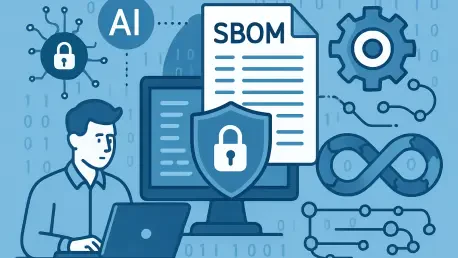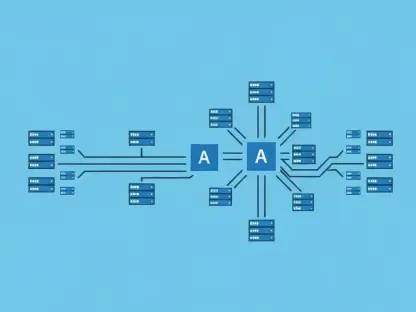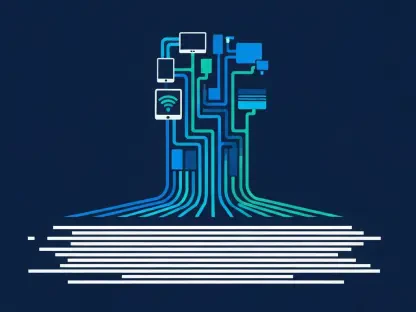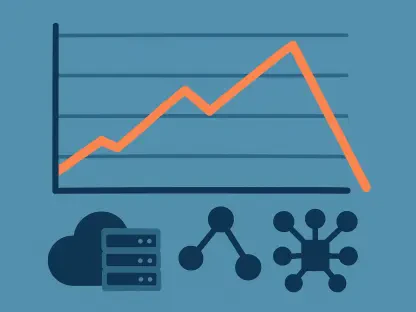In an era where software supply chain attacks are escalating at an alarming rate, with a reported 700% increase in such incidents over the past few years, organizations are under immense pressure to secure their development pipelines. The complexity of modern software, often built on intricate webs of dependencies, has made vulnerability management a daunting task. A critical component in addressing this challenge lies in the Software Bill of Materials (SBOM), a structured inventory of software components that offers visibility into potential risks. However, generating accurate SBOMs and leveraging them effectively across enterprise environments has often been a hurdle. This article delves into a transformative journey, starting from a targeted fix in the open-source tool Trivy, and scaling it into a robust, Generative AI (GenAI)-powered solution for DevSecOps. By exploring this progression, a clearer path emerges for integrating security seamlessly into development workflows, ultimately fortifying digital ecosystems against emerging threats.
From Technical Fixes to Strategic Solutions
Enhancing Dependency Mapping in Trivy
The foundation of this transformative approach begins with a specific improvement in Trivy, an open-source vulnerability scanner widely used for container and software security. A pivotal update, addressing incomplete dependency graphs in multimodule projects, introduced cross-result dependency resolution to ensure accuracy. By replacing broken UUID references with precise Package URLs (PURLs), this fix significantly improved the quality of SBOM data. Such precision is vital for downstream analysis, as incomplete or erroneous dependency mapping can lead to undetected vulnerabilities slipping through the cracks. This technical enhancement not only resolved a persistent issue but also set the stage for more advanced security measures. With accurate SBOMs as a starting point, the potential to integrate automated tools and intelligence-driven insights became tangible, allowing organizations to move beyond manual checks and reactive fixes. The impact of this seemingly small change reverberates through the entire security lifecycle, proving that foundational improvements can yield substantial benefits when scaled appropriately.
Building a Foundation for AI Integration
Building on the enhanced SBOM data from Trivy, the next step involved harnessing Generative AI to elevate dependency analysis and vulnerability intelligence. GenAI algorithms can process vast datasets, identifying patterns and correlations that human analysts might overlook, thus providing deeper insights into potential risks. This integration enables real-time detection of critical threats, such as zero-day vulnerabilities akin to the infamous Log4j incident, by cross-referencing SBOM data with extensive CVE databases. The automation of such processes ensures that security teams are not bogged down by repetitive tasks, freeing them to focus on strategic priorities. Moreover, the application of AI extends beyond mere detection, offering predictive capabilities that help anticipate vulnerabilities before they are exploited. This shift from a reactive to a proactive stance marks a significant leap forward, positioning organizations to stay ahead of increasingly sophisticated cyber threats while maintaining the agility required in fast-paced development environments.
Enterprise-Scale Implementation and Impact
Architecting Security with Microservices and CI/CD
Scaling the GenAI-enhanced SBOM analysis to enterprise levels required a robust architectural framework, with microservices playing a central role in ensuring adaptability and resilience. By breaking down the system into modular components, organizations can manage complex environments more effectively, allowing for seamless updates and scalability as needs evolve. Integration with CI/CD pipelines, through platforms like Jenkins and GitLab, embeds security checks directly into the development process, ensuring vulnerabilities are caught early. Connections to SIEM systems like Splunk and ticketing tools such as Jira further streamline incident response, creating a cohesive ecosystem where security and development operate in tandem. This architectural approach not only enhances operational efficiency but also minimizes disruptions, as issues are identified and addressed in real time. The result is a DevSecOps framework that aligns security with business objectives, reducing friction between teams and fostering a culture of shared responsibility for software integrity.
Quantifying Business Value and Operational Gains
The transition to an enterprise-grade DevSecOps platform, powered by GenAI and precise SBOM analysis, delivers measurable business outcomes that underscore its value. Metrics reveal an impressive 89% reduction in false-positive vulnerability alerts, drastically cutting down on wasted time and resources. Additionally, automation has led to annual cost savings estimated at $5.86 million for large organizations, highlighting the financial benefits of such implementations. Beyond numbers, the platform achieves an 847% three-year return on investment with a payback period of just 7.2 months, demonstrating rapid value realization. Compliance efforts also see significant improvement, with audit preparation time reduced by 86% due to automated policy enforcement and comprehensive visibility. These gains illustrate how technical precision, when scaled strategically, translates into tangible advantages, enabling enterprises to mitigate supply chain risks while optimizing development velocity and maintaining regulatory adherence.
Reflecting on Transformative Security Milestones
Looking back, the journey from a targeted fix in Trivy to a comprehensive enterprise security solution marked a pivotal shift in how software vulnerabilities are addressed. What began as a technical enhancement to dependency mapping evolved into a GenAI-driven platform that redefined DevSecOps practices. The integration of accurate SBOM data with cutting-edge AI tools enabled organizations to detect and prevent threats proactively, while microservices and CI/CD integrations ensured scalability across complex environments. The quantifiable impacts, from cost savings to compliance efficiency, underscored the profound influence of these advancements. As a next step, organizations should focus on continuous refinement of AI models and deeper integration with emerging technologies to stay ahead of evolving threats. Exploring partnerships with open-source communities and investing in cross-industry collaboration could further enhance these solutions, ensuring that security remains a dynamic, adaptive force in the ever-changing landscape of software development.









